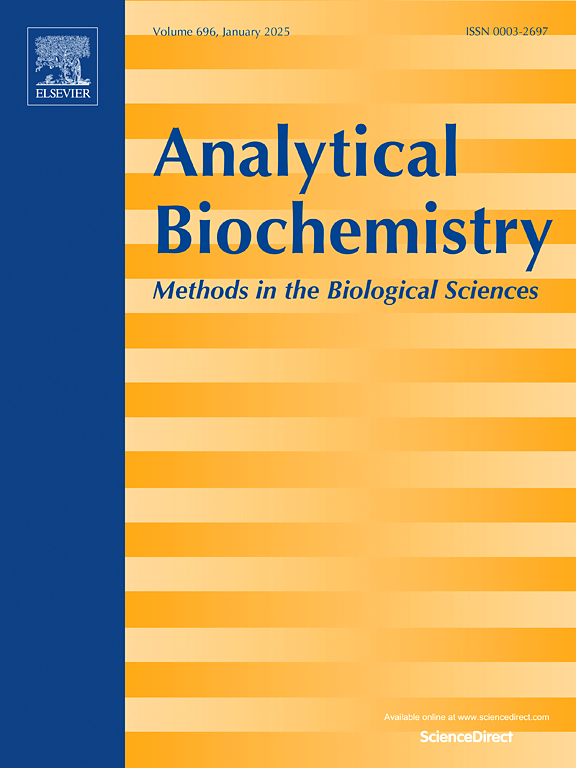短读全基因组测序在2型肌强直性营养不良诊断中的高分辨率重复结构分析。
IF 2.5
4区 生物学
Q2 BIOCHEMICAL RESEARCH METHODS
引用次数: 0
摘要
背景/目的:诊断2型肌强直性营养不良(DM2)的可能性不断发展,以实现更准确和更快的诊断。全基因组测序(WGS)和专门的串联重复序列(TR)基因分型生物信息学工具是分子诊断领域的一项突破性技术。我们决定描述基于wgs的DM2分子诊断的新机遇和挑战。方法:获得50例WGS数据,包括5例DM2患者和1例携带突变前等位基因的个体。使用改良版Dante工具进行TR表征,并通过常规PCR和重复引物PCR验证结果。结果:我们使用WGS鉴定了所有扩展范围的DM2等位基因,以及突变前范围的等位基因。与传统方法相比,WGS在正常范围等位基因的详细序列结构表征和整个cnbp复合物基序的分相方面更有效。常规方法与wgs结果的基因分型一致性达97%,差异主要基于基因型的单重复差异。在两种方法中,口吃效应都带来了一些不确定性。结论:短读WGS通过精确的重复基序表征为DM2诊断提供了巨大的潜力,也可能适用于其他串联重复序列疾病(TRDs)。本文章由计算机程序翻译,如有差异,请以英文原文为准。

High-resolution repeat structure analysis in myotonic dystrophy type 2 diagnostics using short-read whole genome sequencing
Background/Objectives
Diagnostic possibilities for myotonic dystrophy type 2 (DM2) are constantly evolving in order to achieve more accurate and faster diagnosis. Whole genome sequencing (WGS), together with specialized tandem repeat (TR) genotyping bioinformatic tools, represent a breakthrough technology in molecular diagnostics. We decided to characterize new opportunities and challenges in WGS-based DM2 molecular diagnostics.
Methods
WGS data were obtained from 50 individuals, including five DM2 patients, and one individual carrying a premutation range allele. TR characterization was performed using a modified version of the Dante tool, with results validated by conventional PCR and repeat-primed PCR.
Results
We used WGS to identify all of the expansion-range DM2 alleles, together with the premutation-range allele. Compared to conventional methods, WGS was more efficient for a detailed sequence structure characterization of the normal-range alleles, and phasing of the entire CNBP-complex motif. A 97 % genotyping concordance rate was achieved between the conventional methods and the WGS-derived results, with discrepancies mainly based on single-repeat differences in the genotypes. The stutter effect introduced some uncertainty in both methods.
Conclusion
Short-read WGS offers significant potential for DM2 diagnostics by enabling precise repeat motif characterization and may also apply to other tandem repeat disorders (TRDs).
求助全文
通过发布文献求助,成功后即可免费获取论文全文。
去求助
来源期刊

Analytical biochemistry
生物-分析化学
CiteScore
5.70
自引率
0.00%
发文量
283
审稿时长
44 days
期刊介绍:
The journal''s title Analytical Biochemistry: Methods in the Biological Sciences declares its broad scope: methods for the basic biological sciences that include biochemistry, molecular genetics, cell biology, proteomics, immunology, bioinformatics and wherever the frontiers of research take the field.
The emphasis is on methods from the strictly analytical to the more preparative that would include novel approaches to protein purification as well as improvements in cell and organ culture. The actual techniques are equally inclusive ranging from aptamers to zymology.
The journal has been particularly active in:
-Analytical techniques for biological molecules-
Aptamer selection and utilization-
Biosensors-
Chromatography-
Cloning, sequencing and mutagenesis-
Electrochemical methods-
Electrophoresis-
Enzyme characterization methods-
Immunological approaches-
Mass spectrometry of proteins and nucleic acids-
Metabolomics-
Nano level techniques-
Optical spectroscopy in all its forms.
The journal is reluctant to include most drug and strictly clinical studies as there are more suitable publication platforms for these types of papers.
 求助内容:
求助内容: 应助结果提醒方式:
应助结果提醒方式:


